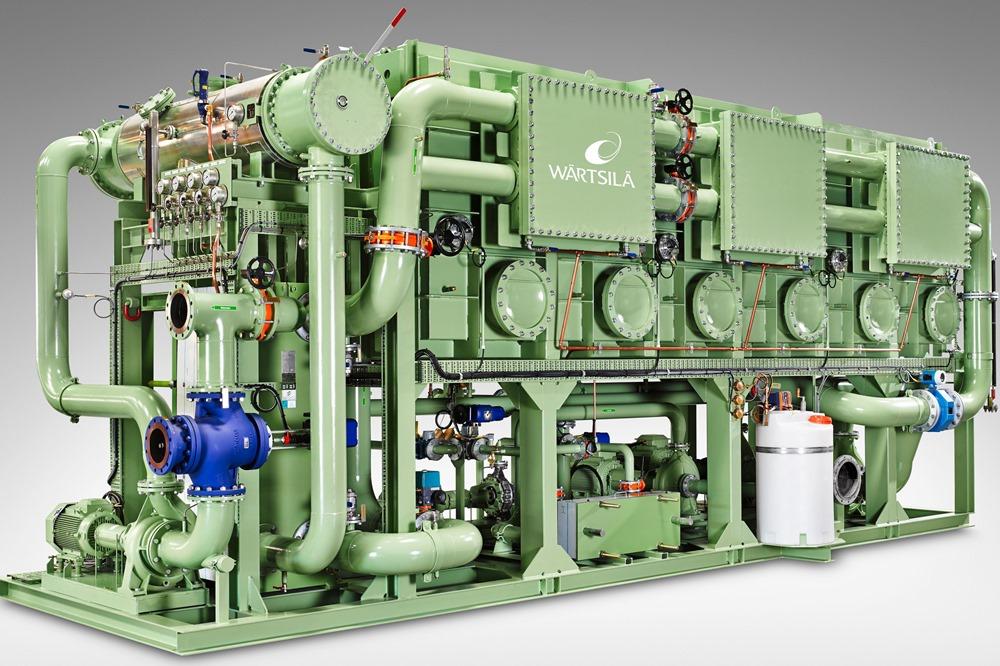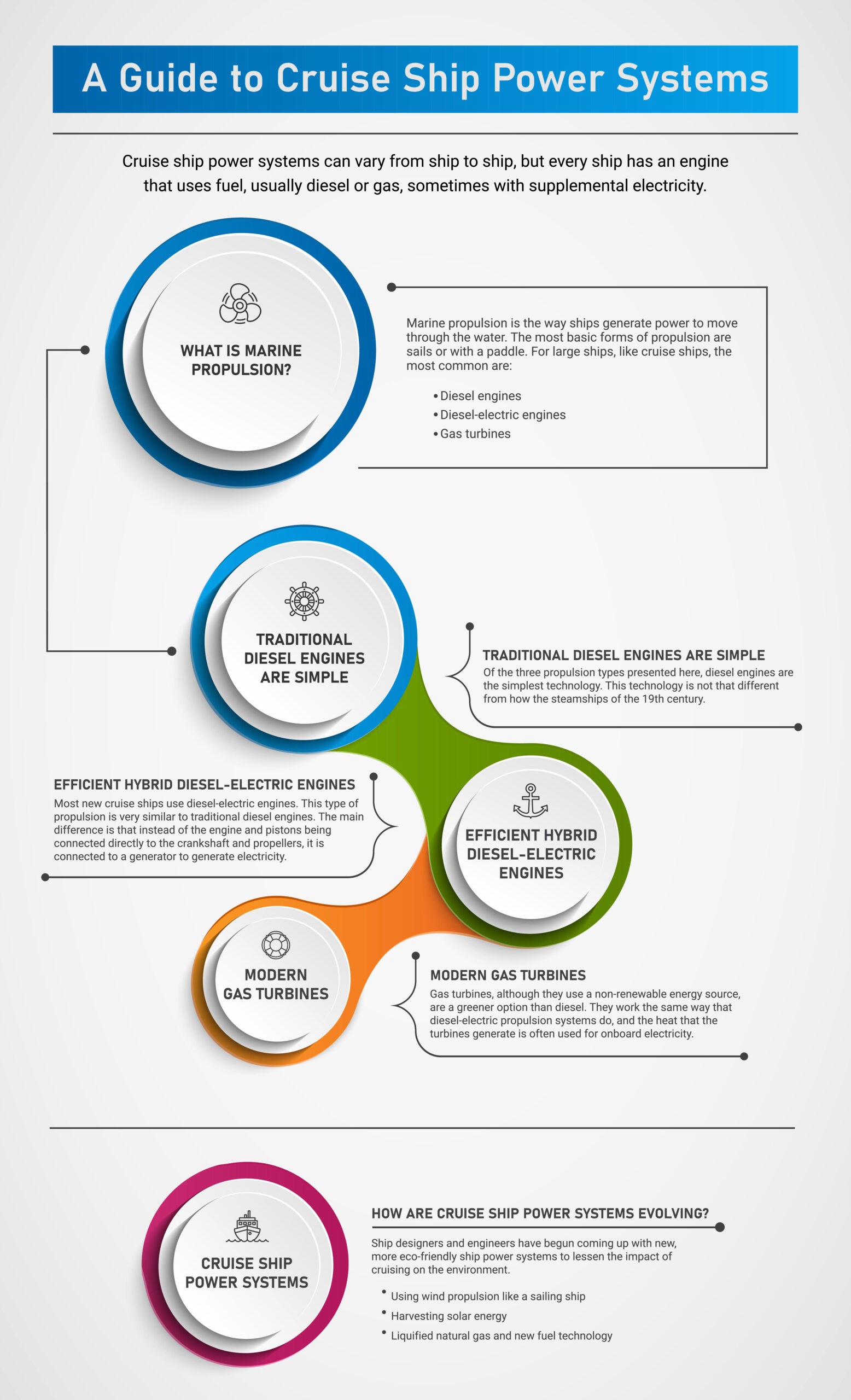Yes, cruise ships generate electricity. The most common power system on cruise ships is diesel-electric. This means that the ship’s diesel engines produce electricity.
How do ships generate electricity

Turbine. Turbines for power generation are generally found on ships fitted with WHR(Waste Heat Recovery) systems. It can either be a steam turbine(ST) or a power turbine(PT) or in some cases both. Regardless of the type of turbine, the turbine shaft is connected to the alternator rotor via a reduction gearbox.
When it comes to the world of cruise ships, there are many aspects that come into play. From the luxurious amenities to the tantalizing cuisines, these floating resorts provide an unforgettable experience for passengers.
But have you ever wondered how these massive vessels generate the necessary electricity to power all the onboard facilities? In this blog post, we will explore the fascinating world of cruise ship electricity generation.
Understanding the Power Sources
Cruise ships rely on a combination of power sources to generate electricity. The main sources include:
| Power Source | Description |
|---|---|
| Diesel Generators | These are the primary powerhouses of the ship, typically located in the engine room. These generators are responsible for converting diesel fuel into electrical energy. |
| Solar Panels | Some modern cruise ships incorporate solar panels to harness the power of the sun. These panels are usually placed on the upper decks, allowing them to capture sunlight and convert it into usable electricity. |
| LNG Power | A few newer cruise ships are equipped with Liquid Natural Gas (LNG) power plants. LNG provides a cleaner alternative to diesel fuel, reducing emissions and improving environmental sustainability. |
The Role of Diesel Generators
Diesel generators are the heart of a cruise ship’s power generation system. These engines use diesel fuel to create mechanical energy, which is then converted into electricity. They are highly reliable and capable of providing consistent power to the entire vessel.
Typically, a cruise ship will have several diesel generators operating simultaneously. This redundancy ensures uninterrupted power supply, even if one or more generators require maintenance or repairs. In case of emergencies or unexpected power demand, additional backup generators can be activated.
These generators produce electricity in high voltage AC (alternating current) that is then fed into a network of transformers, converting it to lower voltage for use throughout the ship.
Battery Banks for Energy Storage
Most cruise ships are also equipped with battery banks to store excess electricity generated during peak times or when the demand is low. These energy storage systems allow for more optimal distribution of power, reducing reliance on diesel generators and promoting energy efficiency.
Battery banks also come in handy when a ship is berthed at a port and needs to shut down its engines. The stored energy can be utilized to power essential onboard functions, such as lighting or air conditioning, without relying solely on external power sources.
Environmental Sustainability Initiatives
In recent years, there has been a growing concern for environmental sustainability within the cruise industry. Cruise companies are increasingly investing in greener technologies to minimize their carbon footprint.
Solar panels are becoming more prevalent on new cruise ships, allowing for harnessing of natural energy and reducing reliance on traditional power sources. Additionally, the usage of LNG as a fuel source is increasing, reducing emissions of harmful gases and contributing to cleaner air quality.
Some cruise lines have also started implementing shore power technology, which allows ships to connect to an electrical grid at the port.
This connection enables the ship to receive electricity from the land-based power system, eliminating the need to run the onboard generators while docked.
Frequently Asked Questions
Do Cruise Ships Generate Electricity?
Cruise ships have onboard power plants that generate electricity to meet their energy needs, including lighting, air conditioning, and propulsion systems.
How Do Cruise Ships Generate Electricity?
Cruise ships typically generate electricity through the use of large generators powered by diesel engines. These generators produce electricity by burning fuel to drive turbines, which then generate electrical power.
Why Do Cruise Ships Need Electricity?
Cruise ships require electricity to operate various systems onboard, such as lighting, air conditioning, navigation equipment, entertainment facilities, and other amenities that enhance the passenger experience.
How Much Electricity Does A Cruise Ship Generate?
The amount of electricity generated by a cruise ship can vary depending on its size and capacity. On average, a typical cruise ship can generate enough electricity to power a small town or city.
Conclusion

Cruise ships require a substantial amount of electricity to power various facilities and provide a comfortable experience for passengers. With the utilization of diesel generators, solar panels, LNG power, and battery banks, the industry is continuously evolving to become more environmentally friendly and energy efficient.
As technology advances, we can expect to see even more innovative methods being employed to generate electricity on cruise ships. From utilizing wind power to further optimizing solar energy capture, the future of cruise ship electricity generation looks promising.
